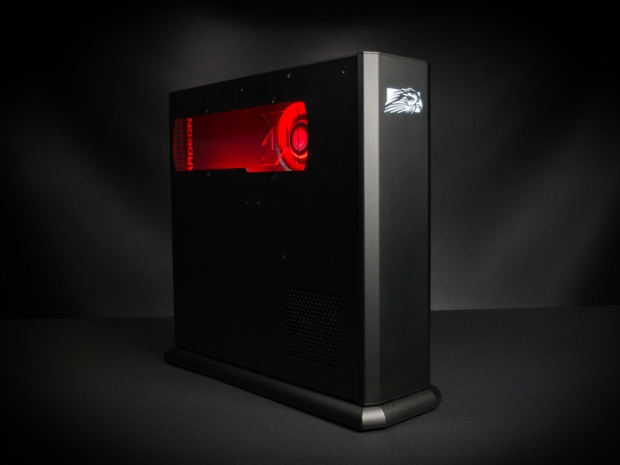Antal Tungler, PR Manager for AMD, tweeted about the showcase on Saturday, instantly sparking the attention of graphics card aficionados inside and outside the event. The GPU was featured inside a new prototype system made by Falcon Northwest (above image).
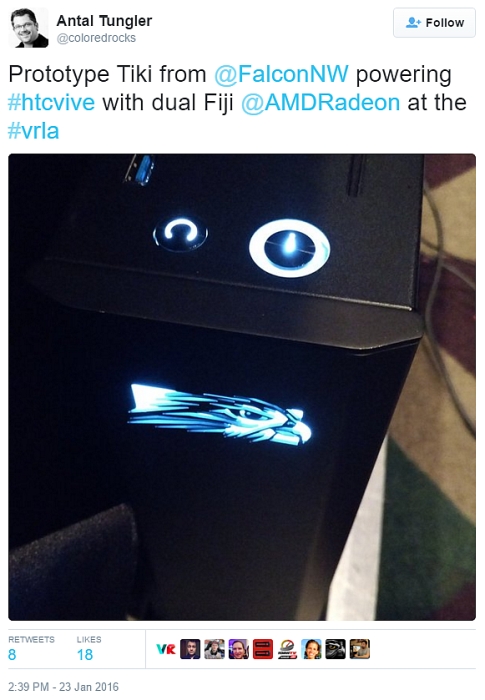
Source: Twitter
VRLA is a show about everything related to virtual reality, and this year some of the HTC Vive demonstrations were powered by PCs with AMD’s dual-GPU flagship enthusiast card.
AMDs Roy Taylor, Corporate VP of Alliances, also tweeted a photo showing a very packed VRLA event this weekend.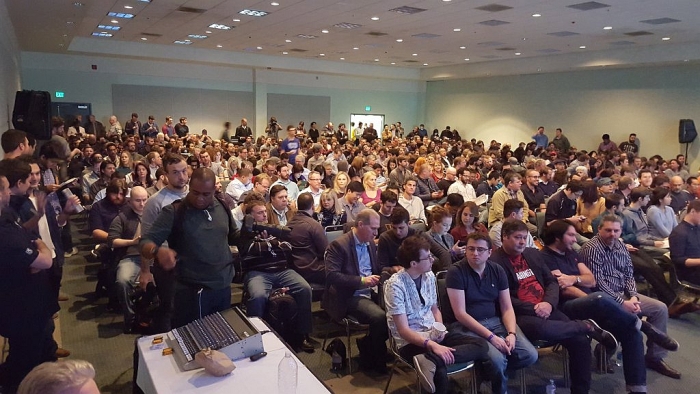
Source: Twitter
Last summer during E3 2015, AMD co-hosted the first ever PC Gaming Show at the Belasco Theater in Los Angeles. During the event, AMD CEO Lisa Su took the stage showed off the Radeon R9 Fury X dual-GPU card for the very first time to a public audience.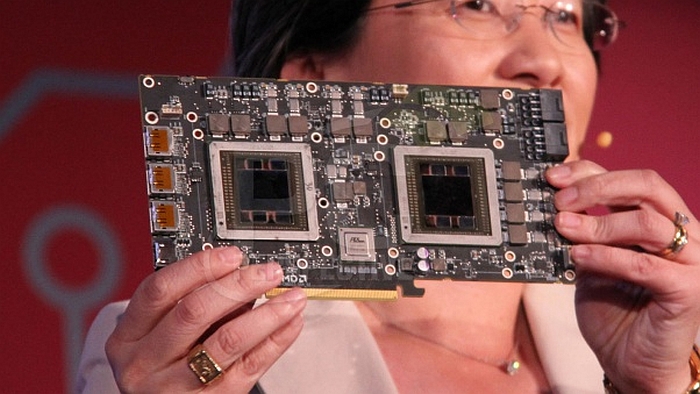
AMD CEO Lisa Su unveils the Radeon R9 Fury X2 dual-GPU during the PC Gamer Show at E3 2015
The card is expected to be much shorter and simpler than previous AMD dual-GPU cards like the Radeon R9 295X2, Radeon HD 7990, Radeon HD 6990 and Radeon HD 5970. This is mostly thanks to the space-saving design of 3D-stacked High Bandwidth Memory (HBM) compared with planar GDDR5. The board also uses a PLX 8747 bridge chip to handle communication between the two GPUs. We are expecting a maximum of 4GB of HBM per GPU (8GB in total), which should make for a nice framebuffer in VR games as well as 4K content, assuming that AMD delivers solid multi-GPU scaling efficiency in its upcoming R9 Fury X dual-GPU supporting Radeon GPU drivers.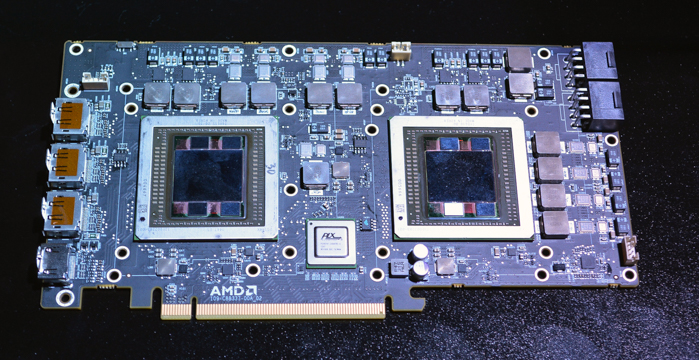
AMD's 28nm Radeon R9 Fury X2 dual-GPU (Larger image here)
AMD’s upcoming Fury X dual-GPU flagship card should be available sometime before the end of Q1 or early Q2 2016 to better coincide with the launch of the Oculus VR and HTC Vive headsets.

